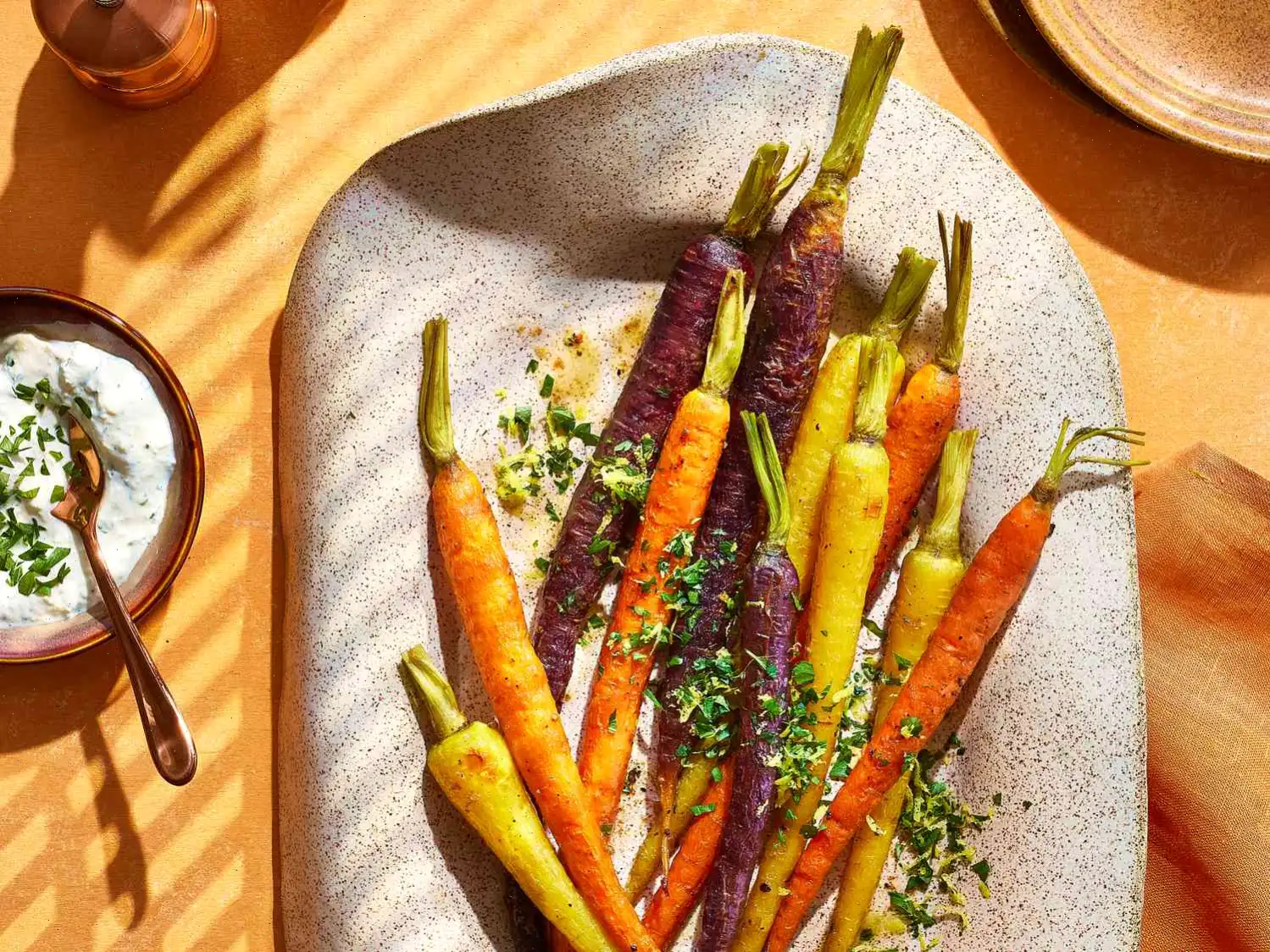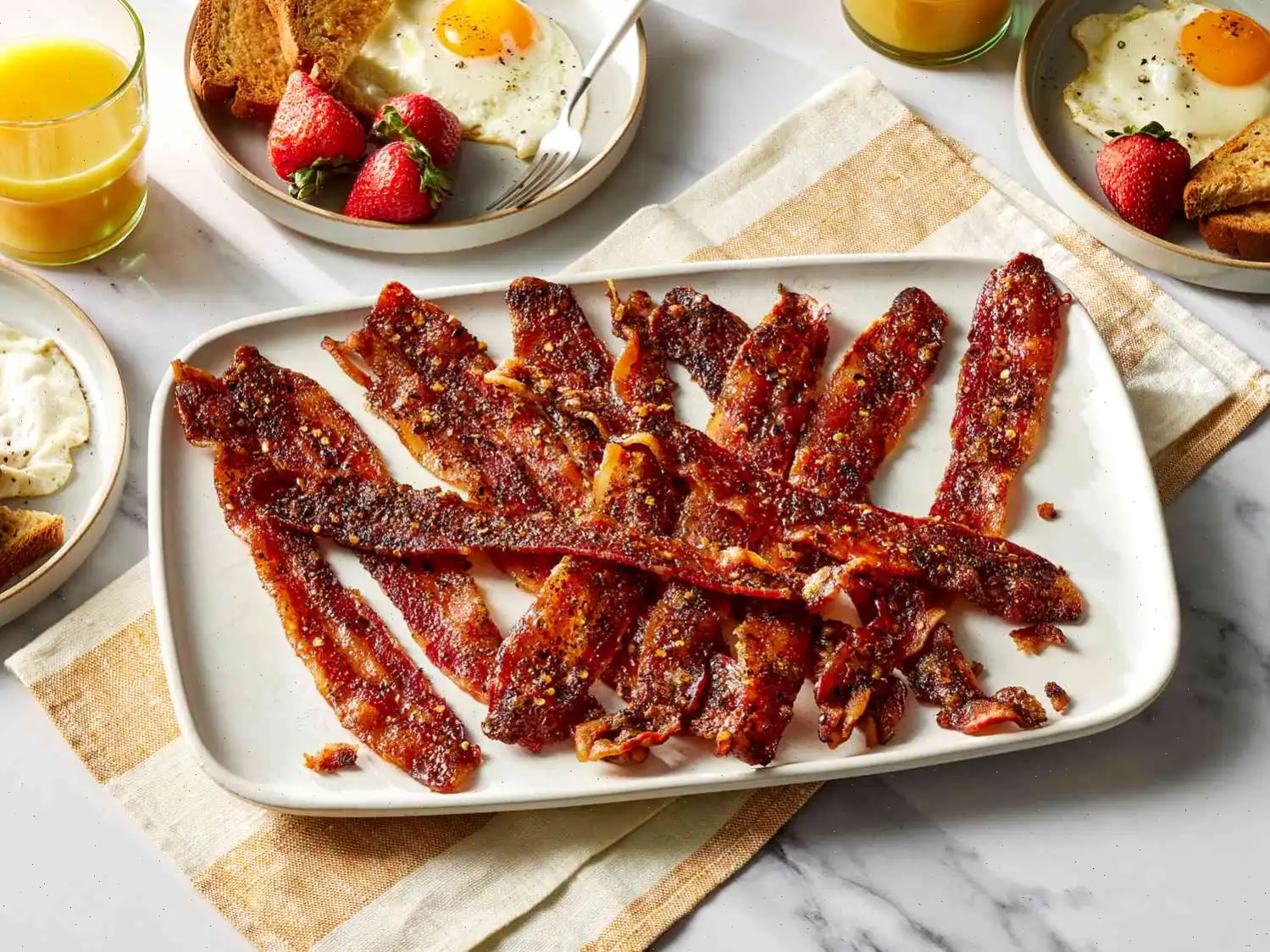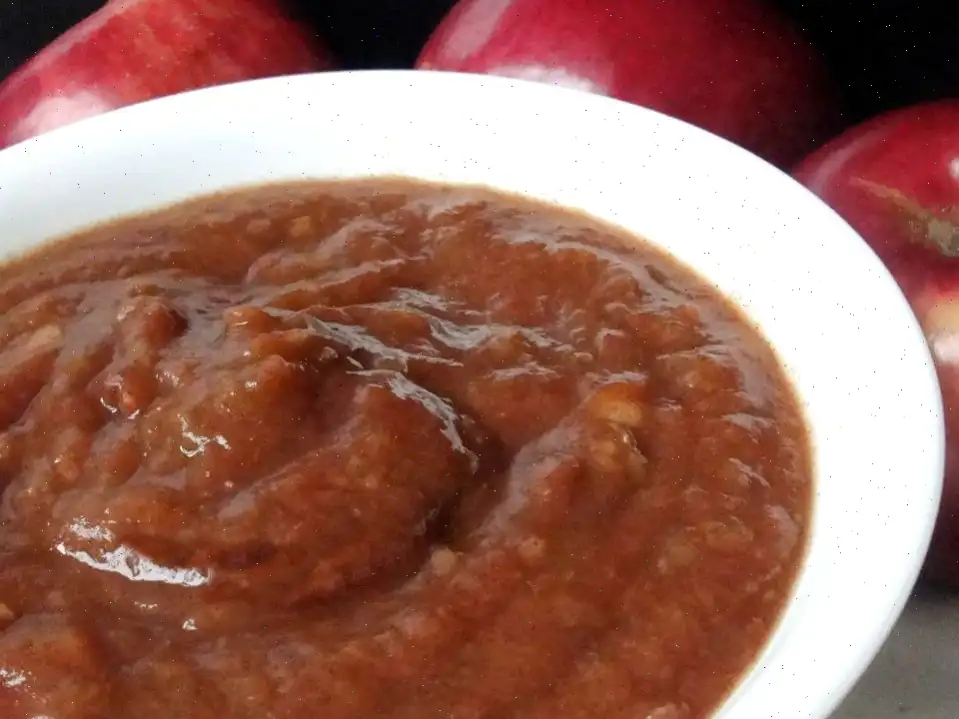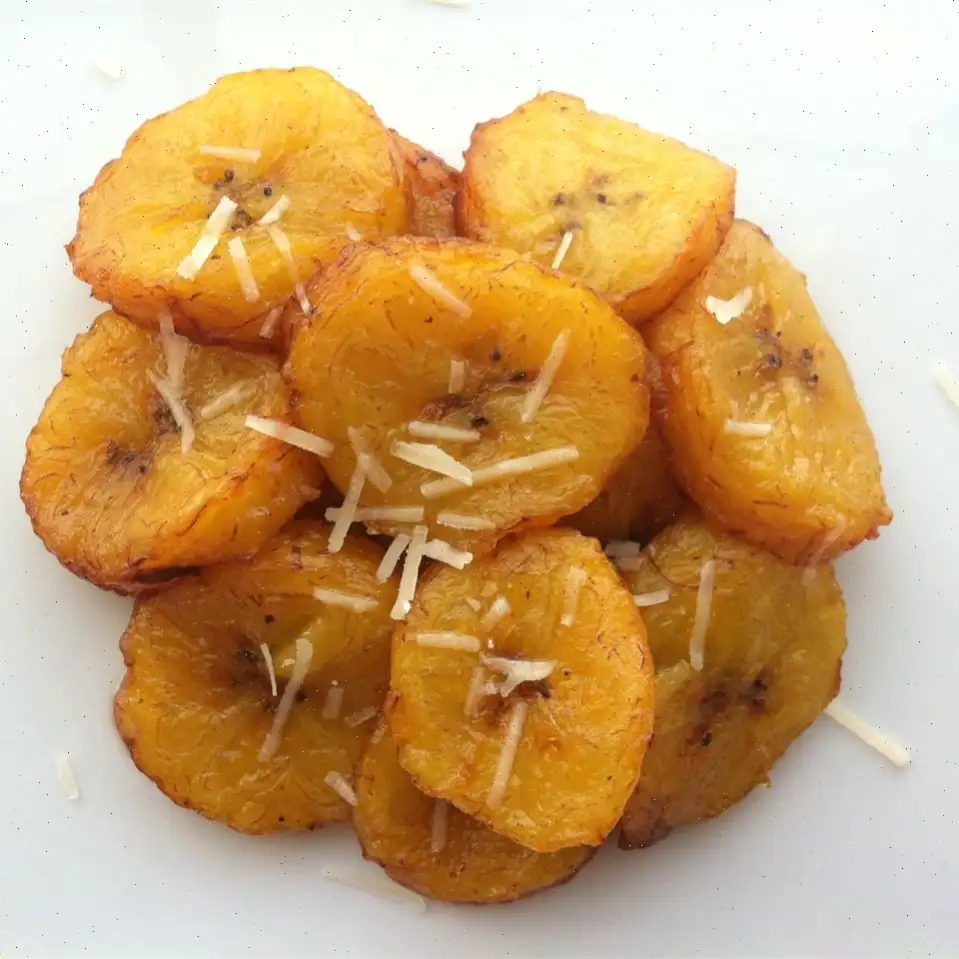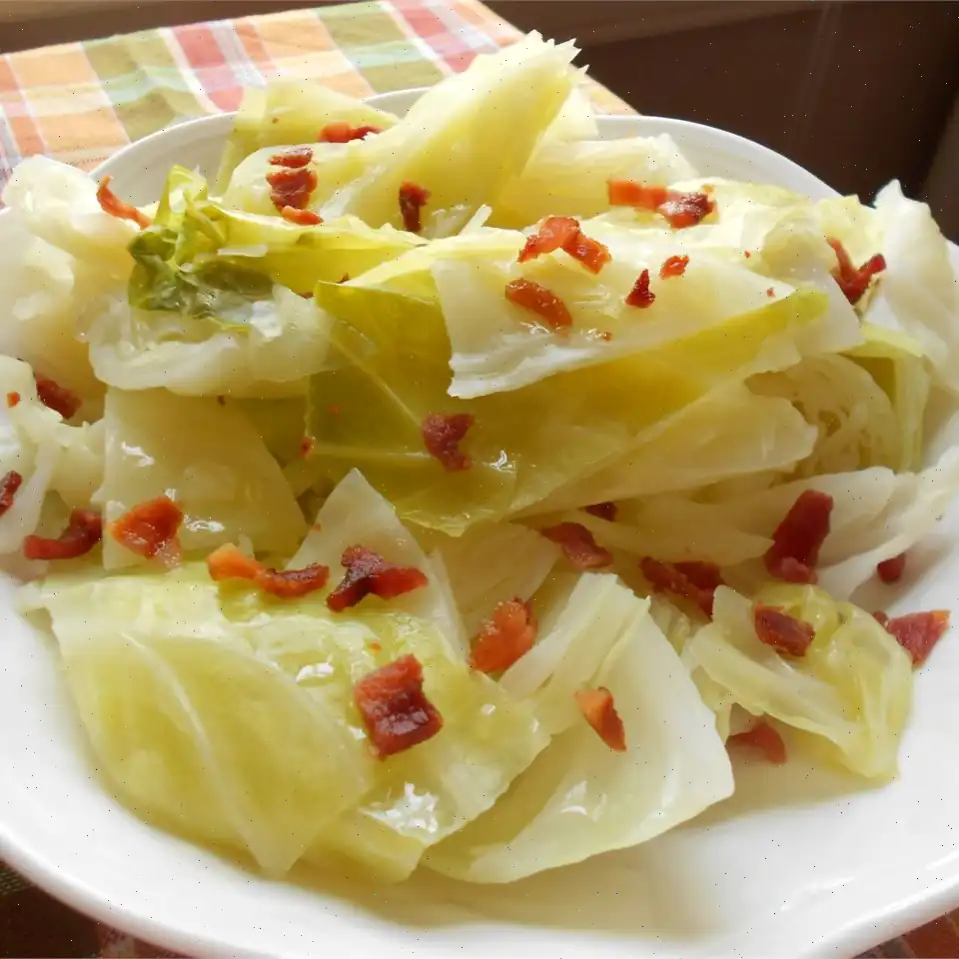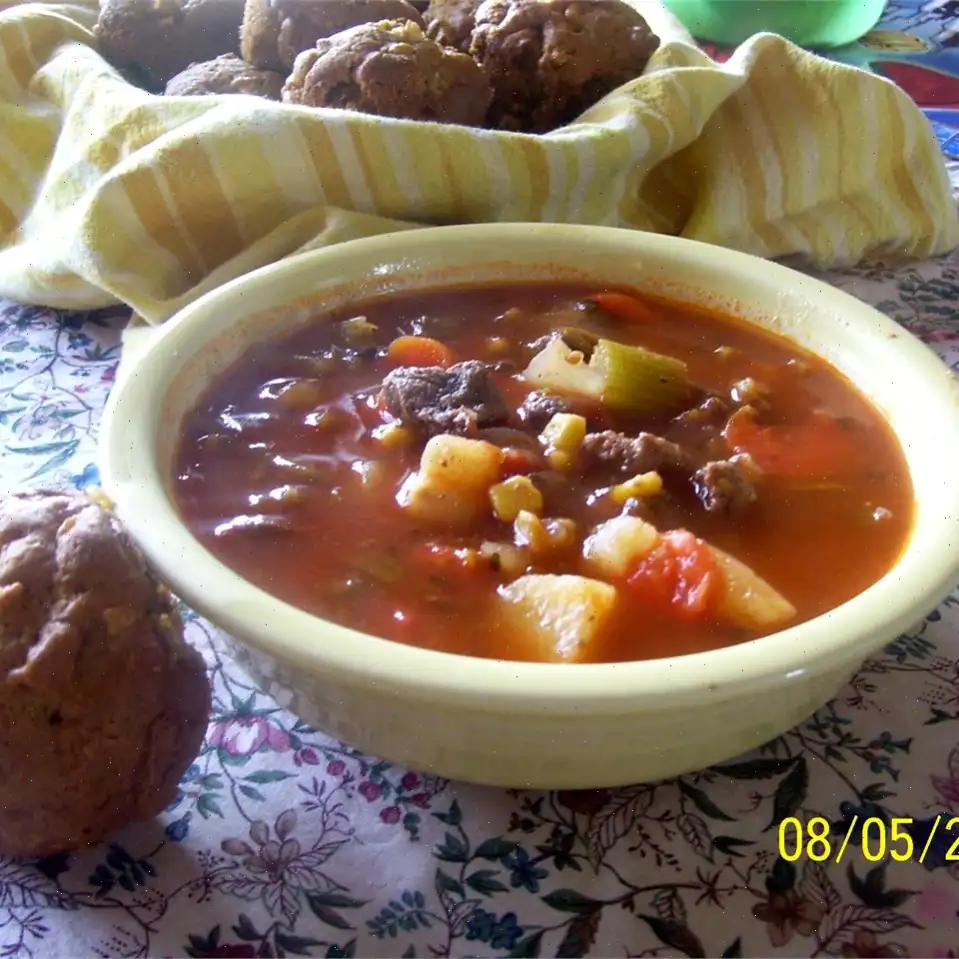
Buttered Carrots Recipe
Roasted Carrots with Horseradish Sauce
Ingredients (for 4 servings):
- 1 pound carrots
- 1/4 cup butter
- 3/4 teaspoon kosher salt
- 1/4 teaspoon freshly ground black pepper
- 1/2 cup sour cream
- 2 tablespoons prepared horseradish
- 1 tablespoon chopped fresh parsley, plus more for garnish
- 1 teaspoon lemon zest, plus more for garnish
Directions:
- Preheat the oven to 375F (190C). Scrub the carrots thoroughly but do not peel them.
- Melt the butter in a large oven-safe skillet over medium heat. Add the carrots, turning them to coat evenly with butter. Season with salt and pepper, stirring to ensure an even distribution.
- Cook the carrots uncovered for 5 to 6 minutes, turning them halfway through until they begin to brown lightly.
- Transfer the skillet to the oven and reduce the temperature to 300F (150C). Roast the carrots, turning them every 15 minutes. Continue roasting for about 45 minutes, or until they are well browned and tender when pricked with a fork. If necessary, add 1/4 cup of water at a time to prevent the carrots from scorching.
- For the sauce, mix together the sour cream, horseradish, 1 tablespoon of chopped parsley, and 1 teaspoon of lemon zest in a small bowl.
- Once the carrots are done, serve them with the prepared horseradish sauce, garnished with additional parsley and lemon zest.
Nutrition Facts (per serving):
- Calories: 203
- Total Fat: 17g (22% Daily Value)
- Saturated Fat: 10g (51% Daily Value)
- Cholesterol: 47mg (16% Daily Value)
- Sodium: 434mg (19% Daily Value)
- Total Carbohydrates: 12g (4% Daily Value)
- Dietary Fiber: 4g (13% Daily Value)
- Total Sugars: 6g
- Protein: 2g (4% Daily Value)
- Vitamin C: 8mg (9% Daily Value)
- Calcium: 73mg (6% Daily Value)
- Iron: 1mg (3% Daily Value)
- Potassium: 332mg (7% Daily Value)
Note: Percent Daily Values are based on a 2,000 calorie diet. Your daily values may be higher or lower depending on your calorie needs.
Buttered carrots are a simple yet delicious side dish, often enjoyed alongside various main courses. The combination of tender carrots, rich butter, and a hint of seasoning creates a delightful flavor profile that appeals to many. This dish, which is both easy to make and elegant in taste, has a fascinating history and regional variations that make it a beloved choice for family dinners and festive occasions.
History of Buttered Carrots
The history of buttered carrots is tied to the broader history of roasting vegetables, which became popular in Europe in the 17th and 18th centuries. As butter became more widely available in kitchens across the continent, it quickly became a go-to cooking fat for enhancing flavors in vegetables like carrots. The method of roasting vegetables, especially carrots, with butter was a natural progression for many cooks looking to elevate the taste and texture of simple root vegetables. Today, buttered carrots are considered a staple of American and European cuisine, especially for holiday meals.
Regional Features and Variations
While buttered carrots are enjoyed worldwide, regional variations often influence how they are prepared. In some parts of Europe, buttered carrots might be prepared with a touch of honey or herbs like thyme or rosemary, lending a sweeter or more aromatic profile to the dish. In the United States, buttered carrots are often served with a creamy sauce made from sour cream, horseradish, and fresh parsley, offering a tangy contrast to the richness of the butter. These variations reflect local tastes, seasonal ingredients, and cultural preferences for certain flavor combinations.
How Buttered Carrots Differ from Similar Dishes
Buttered carrots differ from similar carrot dishes like glazed carrots or steamed carrots in several ways. Glazed carrots are typically cooked with a sweet syrup or glaze, such as a mixture of butter, brown sugar, and sometimes orange juice, which results in a sweeter and stickier texture. On the other hand, steamed carrots are boiled or steamed to retain their natural flavors and nutrients without the richness that buttered carrots provide. The addition of creamy sauces or seasonings like horseradish in buttered carrots gives this dish a unique, savory, and slightly tangy flavor, setting it apart from other common carrot preparations.
Where Buttered Carrots Are Typically Served
Buttered carrots are a versatile side dish that can be found at various occasions and in diverse culinary settings. In American cuisine, they are often served as part of a holiday feast, particularly during Thanksgiving and Christmas. The buttery, tender nature of the dish makes it a perfect complement to roast turkey, ham, or other festive meats. Additionally, buttered carrots are commonly paired with simple weeknight dinners and are a go-to option for family meals, as they are quick to prepare and pair well with many main dishes. In European countries, particularly in France and the UK, buttered carrots may also appear as an accompaniment to roasted meats or poultry in both casual and formal dining settings.
Interesting Facts About Buttered Carrots
- Carrots, which are the main ingredient in buttered carrots, were originally purple and not orange. The familiar orange variety was developed in the Netherlands in the 17th century.
- Carrots are rich in beta-carotene, a form of vitamin A, which is essential for maintaining good vision and immune function.
- Buttered carrots are often used as a comfort food, as the rich butter and soft texture evoke feelings of warmth and nostalgia, particularly in colder months.
- In some cultures, carrots are seen as a symbol of good health and prosperity, making dishes like buttered carrots a popular choice during celebratory meals.
- The addition of horseradish in the creamy sauce for buttered carrots can help stimulate digestion, making it not only a flavorful but also a healthful accompaniment to meals.
Whether you are preparing them for a family dinner or a festive holiday feast, buttered carrots remain a classic side dish that combines simplicity with elegance, making it an enduring favorite in kitchens across the world.


